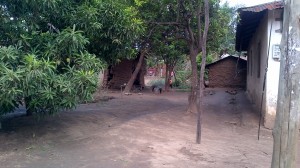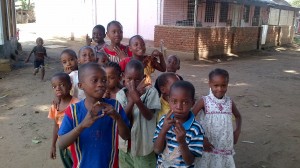I am based in Morogoro; one of Tanzania’s fastest growing urban centers. Morogoro Region has over 2.3 million people and is a major agricultural center. The region is surrounded by the Uluguru Mountains, (part of the Eastern Arc Mountains) which forms the main catchment area for the Ruvu River Basin. It is the Ruvu River that supplies most of the domestic and industrial use water to Tanzania’s major city, Dar es Salaam.
In Morogoro, farmers grow crops on all available land in town and the settlements continue on to the base and up the mountains. Deforestation has been substantial as migrants continue to search for plots for planting crops and grazing animals. This city’s water supply is from the Ngerengere River which holds one of the country’s dams, the Mindu. The water supply has been compromised by silting from deforestation in the catchment area and by mercury run-off from mining operations. High levels of schistomomiasis have been found in the lake behind the dam that holds the city’s water supply. Morogoro faces major challenges. Environmental degradation and AIDS affect the population and extreme poverty is proliferating.
About 65 per cent to residents live on unplanned land where basic services, especially water and sanitation, are non-existent. There are more than 50 unplanned settlements and growth continues as more people migrate to the region. Lack of infrastructure is significant. As the city continues to expand, the government struggles with coordination and financial issues necessary to implement a decentralizing policy framework that was recently developed to manage its resources and deliver services.
Each day, I see boys riding bicycles while balancing several jerry cans of water; school children in their tidy uniforms fetching water in plastic containers and women scrubbing clothes in pails at their homes’ doorstep.
For homes that have water service, the piped water can be at the homes’ door or several homes can make use of a communal tap. You can see from the photo below, the tap that serves these homes.

My research pairs me with two other graduate students from Sokoine University of Agriculture (SUA), where I am being brought in as a research associate. This process has been extensive as I get all documents finalized here in Morogoro and make the proper calls on all who have been involved in my permit process. It’s been a good lesson in African culture.
I didn’t have a photo of SUA, so I copied the one below from 3.bp.blogspot.com. It shows the Uluguru Mountains in the background.
While attempting to take non-intrusive photos of examples of typical water services available in Morogoro, I was delighted by children (and sometimes their mothers), coming over to ask to have their picture taken. I now have photos and video of impromptu sing-alongs, shy little girls and young boys doing their best cool poses from the streets of Morogoro.
While at Sokoine University, I have met with my coordinator and my SUA -appointed research team, Kulwa and Phillip. We will be based in a village called Nyandira where we will do field work for the IWMI -sponsored project.


